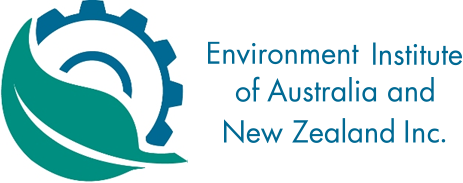-
Member Login
- Home
- About
- Institute Groups
- Membership
- Events
- News & Publications
- Institute Programs
- Resources
- Jobs Board
- Contact Us
- Site Info
EIANZ Certification
The Commonwealth Department of Employment’s 'Job Outlook' indicates there were 25,500 ‘environmental scientists’ in Australia as at November 2014. Approximately half had a single degree, and 82 per cent were working full time and relatively well-paid. If it can be assumed that New Zealand has a similar proportion, there may be a total of 30,000 environmental scientists in the two countries.
The sector had grown strongly over the past 10 years but growth is slowing, and employment prospects are ‘average’ i.e 10,000 to 25,000 job openings over the coming five years, including both ‘new’ jobs and turnover. Most of these existing and new practitioners are likely to be eligible for EIANZ membership and future certification, so the pool of EIANZ members and CEnvPs is enormous. EIANZ has set a target of increasing membership by the year 2020 to 7000 (probably about 15% of the sector by that date) and we’d like to see at least half of those members either as CEnvPs or working towards certification.
The challenges faced by the CEnvP Board in 2016 are to prepare the foundations for growth of this scale, and provide services and support to existing CEnvPs, while maintaining the credibility and industry support of EIANZ’s certification scheme. The first CEnvP Board meeting for the year, on 11 February, addressed:
Procedures and resources required to manage large numbers of applicants
Although the average length of time taken to process applications has declined since 2012, through a combination of online tracking through our applicant database and an increase in the number of Registrars, we are still reliant on volunteers and delays can occur. We are constantly reviewing our performance and now need to make improvements to meet growing demand. Over the past two years, the number of new CEnvP applications (including the four specialist categories) has increased markedly, although this has been partly offset by a number of cancellations, mainly associated with the economic downturn in resource industries. Some practitioners are finding it difficult to justify funding their CEnvP status when ‘between jobs’, but it is important to maintain professional development and certification (and EIANZ membership) through those periods. Please contact the CEnvP Office if your employment situation has changed, as we may be able to tailor a solution to keep you certified.
The newly-established contaminated land specialist certification scheme
This has been subject to more scrutiny from industry and regulators than other specialist certifications, and more competition from other schemes. The certification process (as designed by the Contaminated Land SIS) is also unique in that the panel interview includes review of a technical case study appropriate for each intake in Australia and New Zealand, and there is a special category for applications from auditors in each State, who are already agency-approved for their qualifications, experience and competence. Our first round of Contaminated Land applications and panel interviews has indicated that the CEnvP Scheme is rigorous and transparent, and the CEnvP Board will document these procedures for consideration by environmental agency regulators.
Strategic planning and integration with EIANZ
The CEnvP Board’s Strategic Plan, to be formally adopted at our next meeting, confirms the importance of integration and collaboration with EIANZ. The CEnvP scheme remains one of the ‘flagship’ programs of EIANZ but remains autonomous with respect to certification decisions and allows for non-member applications (as required by the international standard ISO17024 for certification schemes). The relationship between EIANZ and the CEnvP scheme has evolved over the first 10 years of the CEnvP Board, and matured further in 2015 with the amended Rules of Association and shared office arrangements. Priority tasks for both Boards in the first half of 2016 is a By-Law amendment, joint approaches to government and marketing, and ensuring that the shared office efficiently services our members.
We acknowledge and value the rights and interests of Indigenous Peoples in the protection and management of environmental values through their involvement in decisions and processes, and the application of traditional Indigenous knowledge.

